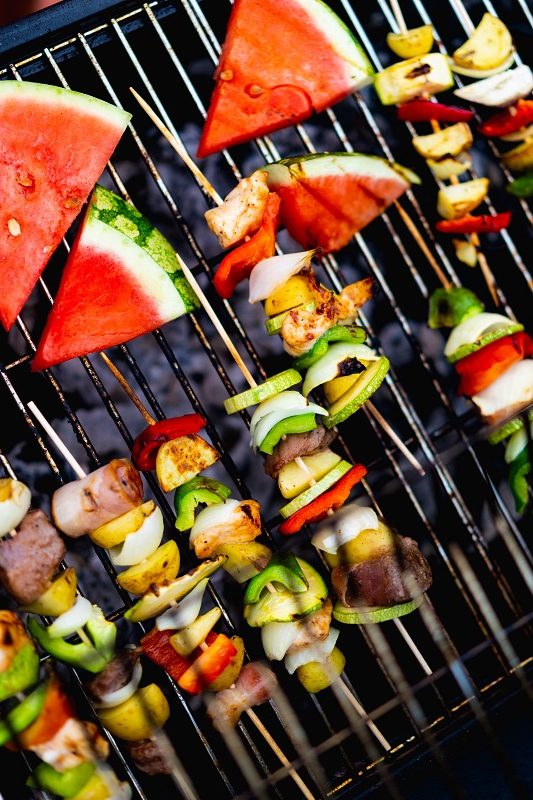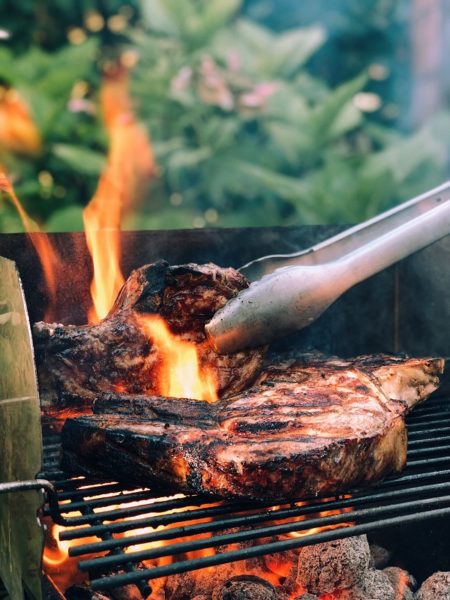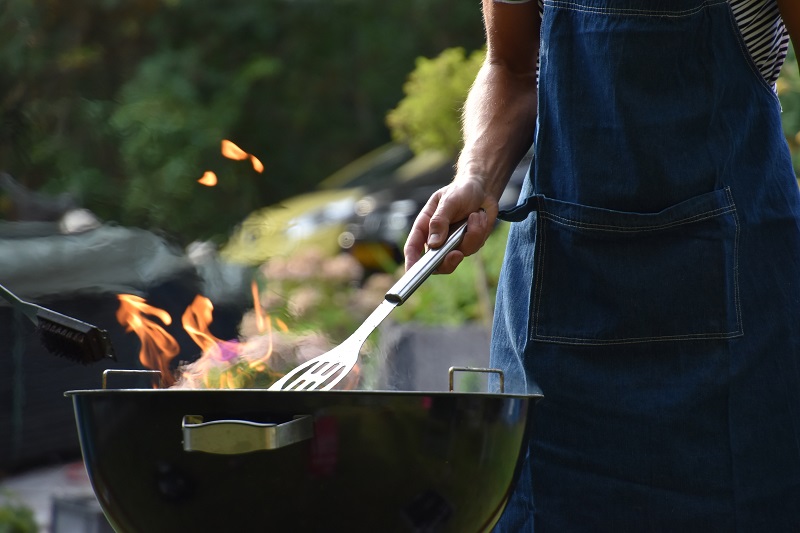There really is something special about getting the barbeque out during these warmer months. Grilling is quick, easy, and thankfully doesn’t require turning on the oven (something of great concern for those of us without AC (insert raising hand emoji)). Unfortunately, grilling meats at a high temperature leads to the production of chemicals called heterocyclic aromatic amines (HAAs), and polycyclic aromatic hydrocarbons (PAHs). Both of which are carcinogenic. Carcinogens are any substances that cause cancer and are thought to alter cellular metabolism and damage DNA. HAAs are created when meat is cooked at a high temperature. Frying and boiling meat can also create HAAs, but charred pieces of grilled meat contain HAAs in their purest form. PAHs are formed when juices from meat or fish drip onto the grill and create smoke. The smoke (which contains the PAHs) swirls around the meat and deposit PAHs onto the surface.
1. Grill More Vegetables.
I’m a big fan of eating more vegetables in general, and this includes while grilling. Make vegetables your main course instead of meat. Grilled vegetables don’t produce the same harmful carcinogens that meat does. While you won’t find HAAs or PAHs in grilled vegetables, burned or charred vegetables can still produce carcinogens in the form of benzopyrene, so it’s best to avoid incinerating your produce. But, truth be told, who wants to incinerate their veggies? When it comes to grilled vegetables I’ll pretty much try anything. Peppers, romaine hearts, squash, tomatoes and even fruit like apples, peaches or watermelon are delicious on the grill. There about a million and a half creative recipes floating around the Internet, but here are some ideas for grilling fruit and some ideas for grilling vegetables.

2. Keep Your Food & Grill Clean
Before using your barbecue, clean off any charred pieces. Do the same thing with your meat when cooking. If a piece is charred or burned, simply cut it off before eating.
3. Precook Your Food
4. Use A Marinade
Marinating your food does two things:
- It makes things much more delicious
- It essentially creates a shield. Word of caution, however, this does not apply to sugary marinades like barbecue sauce, which actually encourages meat to char. Pick marinades made with ingredients like lemon, olive oil, vinegar, or even beer. Add in herbs and spices like rosemary, thyme, ginger, and turmeric, which are anti-inflammatory and delicious.
Remove your meat or fish from the marinade before placing on the grill. Be sure to shake off any excess marinade or gently blot with a paper towel to avoid juices from dripping and creating smoke. Save those sugary marinades for the last one to two minutes on the grill.
5. Choose Lean Cuts
6. Turn Down The Heat
“Well-Done” isn’t really the way to go when it comes to grilling. Studies show that higher temperatures lead to higher amounts of carcinogens. It’s better to cook your meat a little slower and at a lower temperature. If you can, cook below 325° which is the temperature at which HAAs begin to form.

And now for a brief history lesson:
The word barbecue can be traced back from the Spanish word barbacoa in the 18th century. It is generally believed that the Spanish adopted the term from the Awawak people of the Caribbean who used the word to indicate a wooden structure used to grill meats. (The food network also informed me that the Awawak’s second contribution to the English language is ‘cannibal’). During the 17th century transition to English, the word’s meaning was somewhat lost. A barbecue only referred to the wooden structure, not the cooking process. For example, you might use a barbecue as a shelf or a structure to sleep on, but you weren’t using it to cook.
The ancestor of the common backyard barbecue goes back to 18th century colonial America where whole hogs were slow cooked for ~14 hours in a pit over coals. However, famous Anthropologist and writer, Zora Neale Hurston reminds us that it was slaves who took these slow cooking techniques and dressed their meats with sauce made from lemon, lime, and hot peppers- often inspired by Native American cooking. Barbecuing has become synonyms with American Culture, and while we use this food to celebrate our freedom I think it’s important to remember that people who couldn’t enjoy their freedom on the 4th of July helped shaped it. Here’s a great article that explains it better than I can.

